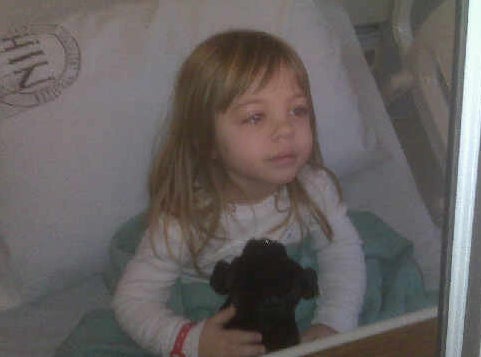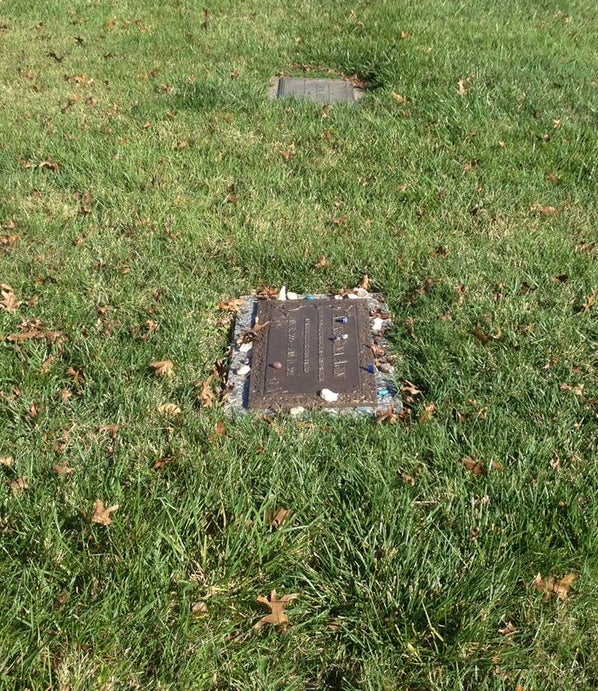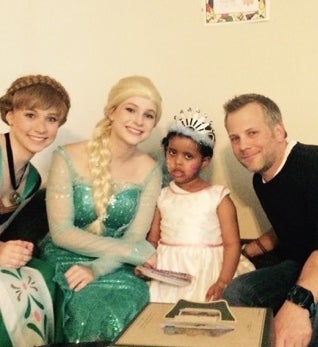
In April 2008, my 27-month-old daughter, Alexis was diagnosed with a terminal and inoperable brain tumor, DIPG (diffuse intrinsic pontine glioma). Prognosis: Nine to 12 months with currently available standard of care therapies. My level of overall awareness of childhood cancer at that time was rather limited. Despite losing a friend to a brain tumor when we were 13, my grasp on the reality of childhood cancer was created against the backdrop of commercially pleasant images. From that point in time in 2008 to this September 2017 (which happens to be childhood cancer awareness month) the amount of “awareness” has skyrocketed.
From the oft-quoted factual statistics, to the gold ribbon, to the community-wide rallying cry of “go gold,” it is heartening to observe this advance. However, as I have witnessed this positive transformation in the amount of information that is presented to the general public about childhood cancer and the significance of September, I have grown frustrated with the the images presented and the disconnect from the actual experience that is childhood cancer. Put simply, the beautiful images of smiling, bald kids and the celebrities embracing children in fancy buildings are a whitewashed attempt to present a sanitized and almost happy version of what it is really like for a child and family to face the diagnosis of childhood cancer. There are even blatant attempts to remove the uncomfortable realities. So I ask, is this really awareness of childhood cancer that is being raised?
“The beautiful images of smiling, bald kids and celebrities embracing them are a whitewashed attempt to present a sanitized and almost happy version of childhood cancer.”
When Alexis was diagnosed, the reality of the experience resembled nothing close to the highly-polished images that flash across TV screens today. Jennifer Aniston must not have been available to come play with my daughter on the day she was diagnosed. No, she must have been busy on April 11, 2008 when the attending oncologist and a social worker sat in a small room off the nursing station to discuss Alexis’ MRI results. The doctor looked at her watch, said she would have to leave when her pager beeped, and then broke the news about Alexis’ terminal prognosis. The beeper cut through the horror in that room within minutes and the journey began. At no point in time did any celebrities come to visit Alexis and tout how well these children were being “cured.” No, Alexis was left in her hospital bed with her grandparents by her side, and a void between that little room and where Alexis sat watching videos opened up the size of the Grand Canyon as I tried to grasp the reality of what just transpired.
When Alexis lay dying in her bed, oxygen cannulas in her small nostrils, shallow breaths emanating from her small body, there were no cars covered in handprints in the driveway and no beautiful posed pictures with celebrities talking about 80 percent of children with cancer being cured and no family turned away. That was not the reality of what was happening in Alexis’ bedroom. Alexis died on January 14, 2011. She did not “lose her battle.” Those of us in her bedroom at 3:03 pm that day did not see Alexis sprout angel wings or ride a unicorn over a rainbow to heaven. Her chest stopped rising and falling and her breath went silent. Her cheeks, swollen from steroids, lay motionless and the color began to fade from her beautiful skin. What happened that day is the reality of childhood cancer.

The portrayal of childhood cancer to those outside of the community is simply a fictional creation that fails to present the honest, yet uncomfortable, truth. To the uninitiated, by seeing one of the TV commercials this September that mention childhood cancer, or through chance by reading any number of pieces written about the facts and statistics of childhood cancer, they are left with a complete misunderstanding. People outside of the community that have never spent time on a pediatric oncology floor at a hospital simply cannot comprehend the nature of childhood cancer given how their realities are shaped.
“The portrayal of childhood cancer to those outside of the community is simply a fictional creation that fails to present the honest, yet uncomfortable, truth.”
Contrary to the images of smiling, bald children at one institution, childhood cancer looks a lot like gaunt kids with blood, tears, vomit, bloating from steroids, IV poles with poison dripping into their veins, oxygen, repeated sedation, morphine pumps for pain, feeding tubes, children being buried and families in horrific pain. Want to know the reality of childhood cancer? Kneel down on the floor holding the hand of a 6-year-old girl while stroking her hair as she lay unconscious taking her last breaths on earth. There were no smiles at my little friend’s funeral, and as I delivered her eulogy, the second one I have given including my own daughter’s, there were only uncontrollable tears. There were no celebrities present on that day either. There were no voiceovers claiming that 80 percent of all children with cancer are “cured.” No, there was just my little friend lying in a coffin and the reality of childhood cancer.

The packaged depiction of childhood cancer that is shoveled down the throats of those who have never been privy to the truth is an intellectually dishonest statement of hope. I understand the reasons behind the marketing of this message; however that does nothing to alleviate my frustration and more importantly, it does nothing to assist those of us working to create new therapies and actually achieve higher survival rates. I had hope each and every day my daughter lived following her diagnosis. And I continue to have hope that the work I dedicate my life to in my role as the Executive Director of the Max Cure Foundation will create more survivors of childhood cancer that do not suffer like those survivors suffer today. I have hope. What I am unwilling to acquiesce to at this point is a false presentation of a disease that kills more children in the United States annually than any other disease.
“This marketing does nothing to assist those of us working to create new therapies and actually achieve higher survival rates.”
Of course what I am sharing as the reality of childhood cancer would not be easy for most people to watch. It would not include beautiful TV commercials filled with celebrities hanging out with children in a hospital. It would not involve dog and pony shows in front of legislators hushed beneath an umbrella of concern that talking about death and children suffering would scare people. The true reality of childhood cancer looks nothing like that.
There is beauty in the reality of childhood cancer if you look for it. During one of Alexis’ hospital stays, I witnessed that beauty. A frail young girl, perhaps 9 or 10 years old, connected to an IV pole dripping toxic substances into her body, dressed in a pink tutu doing laps around the pediatric cancer ward. Each lap garnered a check mark from one of the nurses on their chalkboard. The little girl was pale and greenish in tone, almost completely bald, and she appeared as though she had not eaten in weeks. Yet, there she was, walking slowly, lap after lap dressed in her pristine pink tutu. I have no idea if she is still alive, but I remember her so vividly. Her image showed me some of the beauty and hope that exists in a childhood cancer ward. Even that image though is not “hopeful” enough for the professional peddlers of the visions presented to those outside the community.
“I am still truly thankful to Drew Barrymore, Jennifer Anniston and all the other celebrities we see smiling along with the energetic and bright faces of children with cancer.”
I am truly thankful to Drew Barrymore, Jennifer Anniston and all the other celebrities we see smiling along with the energetic and bright faces of children with cancer. I am sure some will read to this point and think I am targeting them personally. I am not. What I wish is that they knew how unrealistic their images are, and the message being sent to those without an immediate connection to what childhood cancer is really like. I wish they understood the unrealistic depiction of children with cancer they are helping to present is actually in some fashion harmful to the thousands of families that have lost a child with cancer, and also more importantly, creates a false notion that childhood cancer is not a pressing concern. I wish that there were not attempts to sanitize the reality that in many instances childhood cancer means children dying horribly painful deaths. It is a truly scary and remarkably frustrating truth that some who have the mission of raising awareness and funding for research seek to remove the realities of childhood cancer because it is simply too unpleasant.
September is childhood cancer awareness month… The question is, are you really aware about childhood cancer?